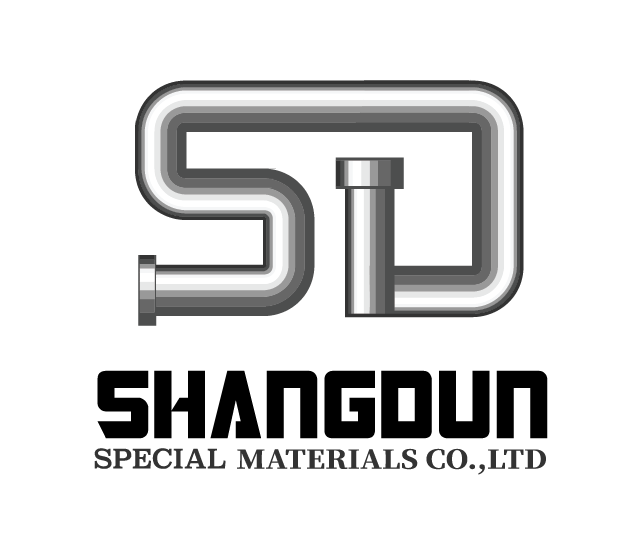In the following forms:
Pipes,tubes
Buttweld Fitting
Round,Square,flat bars,rods
Plates,Sheets,Strips
Flanges & Other kinds of forgings products
Standards: ANSI, DIN, EN, JIS
Nickel-Molybdenum UNS N10675,2.46100, NiMo29Cr,hastelloy B-3,alloy B3
Chemical Composition:
| Ni | Cr | Iron | Mn | Al | C | Cu | Si max | S max | Ti | Mo | P max | Zr 锆 | Y 钇 | W 钨 | Cb+Ta | Co | V 钒 | ta | Ni+Mo |
| 65.0min | 1.0-3.0 | 1.0-3.0 | 3.00 | 0.50 | 0.010 | 0.20 | 0.10 | 0.010 | 0.20 | 27.0-32.0 | 0.03 | 0.10 | 3.0 | cb 0.20max | 3.0 | 0.20 | 0.20 | 94.0-98.0 |
Material Properties:
| Tensile Strength,Min PSI (MPa) | Yield Strength (0.2% offset) Min(Mpa) | Elongation in 2 in. or 50mm or 4D,Min.,% |
| 11000(760) | 51000(350) | 40 |
Standards :
| Seamless Tubing &/or Pipe | Welded Tubing | Welded Pipe | Buttweld fitting | Plate/Sheet/Strip | Bar Forging and Forging stock |
| SB-622 | SB-626 | SB-619 | SB-366 | SB-333 | SB-335,SB-564,SB462,SB472 |
Applications:
Hastelloy B3 is nickel-molybdenum alloy which has the same excellent resistance to hydrochloric acid and other strongly reducing chemicals as hastelloy B-2, but with significantly better thermal stability, fabricability and SCC resistance.
Hastelloy B3 has been primarily used for their resistance to corrosion in nonoxidizing environments such as HCl.But it is is not recommended for use in the presence of ferric or cupric salts because these salts can cause premature failure.
Hastelloy B3 produced by NiWire is well suited for equipment handling hydrochloric acid in all concentrations and temperatures. Resistant to hydrogen chloride gas and sulfuric, acetic, and phosphoric acids. Principal high-temperature uses are those in which a low coefficient of thermal expansion is required.
B-3 Alloy is an additional member of the nickel-molybdenum family of alloys with excellent resistance to hydrochloric acid at all concentrations and temperatures. It also withstands sulfuric, acetic, formic and phosphoric acids, and other non-oxidizing media. B-3 alloy has a special chemistry designed to achieve a level of thermal stability greatly superior to that of it predecessors, e.g. B2 alloy. B-3® alloy has excellent resistance to pitting corrosion, to stress-corrosion cracking and to knife-line and heat-affected zone attack. The improved thermal stability of B-3 alloy minimizes the problems associated with fabrication of B2 alloy components. This is due to the reduced tendency to precipitate deleterious intermetallic phases in B-3 alloy, thereby, affording it greater ductility than B2 alloy during and following various thermal cycling conditions. B-3 alloy has good overall forming and welding characteristics. It may be forged or otherwise hot-worked, providing that it is held at 2250°F. (1230°C) for a time sufficient to bring the entire piece to temperature. Since it is a low carbon alloy, the use of lower hot finishing temperatures may be necessary to achieve grain size control. B-3 alloy may also be formed by cold working. Although it does work-harden somewhat rapidly, B-3 alloy components can be made using all common cold forming techniques. Limited tests in boiling 20 percent hydrochloric acid indicate that the uniform corrosion resistance of B-3 alloy is not affected by cold reductions up to 50 percent as compared to that of the alloy in the solution heat-treated condition. B-3 alloy can be welded by all common welding techniques, although oxyacetylene and submerged arc welding processes are recommended when the fabricated item is to be used in corrosive service. Special precautions should be taken to avoid excessive heat input. All wrought forms of B-3 alloy are furnished in the solution heat-treated condition unless otherwise specified. B-3® alloy is solution heat-treated at 1950°F (1065°C) and rapid quenched, except for bright annealed sheet or coil products which are heat-treated at 2100°F (1150°C) and cooled in hydrogen. B-3 alloy is available in form of plate, sheet, strip, billet, bar, wire, pipe and tubing. B-3 alloy is suitable for use in all applications previously requiring the use of B2 alloy. Like B2 alloy, B-3 is not recommended for use in the presence of ferric or cupric salts as these salts may cause rapid corrosion failure. Ferric or cupric salts may develop when hydrochloric acid comes into contact with iron or copper. The single greatest advantage for B-3 alloy over B2 alloy accrues from its ability to maintain excellent ductility during transient exposures to intermediate temperatures. Such exposures are routinely experienced during heat treatments associated with fabrication. While very short exposures at temperatures such as 1290°F (700°C) can severely embrittle B2 alloy at temperature, B-3 alloy exhibits a marked resistance to such embrittlement for up to several hours. This provides far greater facility for the alloy to be fabricated into complex components such as formed heads. ASME has published Code Case 2140 for solution annealed B-3 alloy (UNS N10675). The alloy is also covered by ASTM specifications B-333 (plate, sheet and strip), B-335 (bar), B-366 (welded fittings), B564 (forgings), B619 (welded pipe), B622 (seamless pipe and tube) and B626 (welded tube). B-3 is a registered trademark of Haynes International Inc.




